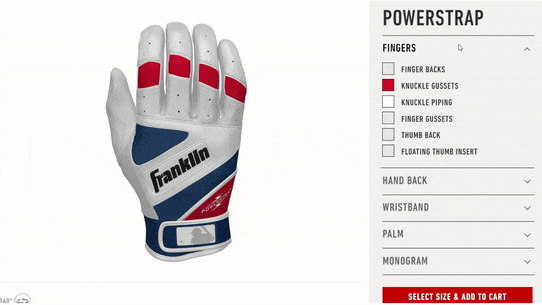
If you thought you still had time to mull over whether or not to provide a 3D shopping experience to your customers, think again. The next decade will see major changes in how consumers interact with ecommerce brands and 3D retail stores.
Technologies that provide interactivity, photorealism, 3D modeling, and augmented reality (AR) should now form part of your product and merchandising strategies. Just last year, research conducted by Harris Poll found that 60% of shoppers want 3D and AR included in their online experiences.
In fact:
These figures alone should make every product team and ecommerce brand sit up and take notice. Consumers are adapting, and retailers need to respond. In April, the Khronos Group announced the formation of an exploratory committee to establish standards and guidelines for 3D retail stores and virtual shopping apps.
With all these indicators, it’s clear that every ecommerce brand will need to invest in 3D shopping experiences to remain competitive in the future. This guide will help you understand what 3D shopping is and why customers now want to discover, explore, and purchase products using a virtual shopping experience.
3D and AR technologies allow retailers to build virtual models of products and enable customers to interact with these items in a virtualized environment. Also called virtual shopping, these technologies aim to bridge the gap between ecommerce brands and the real world.
Customers can zoom in and out on different angles, rotate products, pull up additional information, or even place items inside their real environments before making a purchase.
Some retailers also provide a complete, 3D virtual store on their website, similar to their brick and mortar outlets. These immersive experiences use 3D product visualization and rendering and often have customizable options available with a product configurator.
The main use cases where 3D shopping is gaining the most traction include:
Once a customer is happy with their selection, they complete the buying journey just like any other ecommerce checkout process.
Take a look at how Fender provides guitar fanatics a 3D customization experience for all eight models in their Mod Shop.
Via Fender
It’s clear that consumers want these experiences, and the brands that provide them are realizing the value quickly. According to Deloitte, 46% of retailers planned to deploy AR and 3D shopping experiences in 2020.
While every use case will have different benefits, the main value of these experiences are:
By deploying a 3D shopping experience, your ecommerce brand can boost conversions, increase customer loyalty, and maximize your average order value.
Our customer, Franklin Sports, has seen greatly increased engagement and conversion rates since taking their batting glove configurator 3D in 2020. Check it out for yourself to see why.

Via Franklin Sports
With any new technology, there will be a learning curve, and ecommerce businesses will need some help to get started. In the case of 3D product rendering, the underlying technology is the WebGL graphics library that gives you the ability to create a 3D space within compatible web browsers.
Without getting too technical, WebGL 2.0 is part of the ECMAScript using the HTML5 canvas element. All major web browsers now support WebGL without the need for any additional plugins or add-ons. This allows you to build 3D models of your products and define everything including vertex positions, surface textures, vectors, scaling, and transformations.
As these properties will determine the final 3D rendering of the object, you’ll need some experience with the modeling and implementation of your 3D products. There is a wealth of information available online if you want to get started yourself, or you can opt to use an experienced 3D modeling and AR solutions platform like ConfigureID.
Check out how WebGL allows Hydro Flask to offer its water bottle customization experience in 3D in any browser, without the need to download an app.

Via Hydro Flask
Getting your 3D products into an AR environment is more complicated. You’ll need an AR app that uses a camera to create a real-world-based, augmented environment. Your virtual object database provides the app with the products available for placement, allowing you to overlay objects on the camera’s images.
A typical workflow for 3D and AR product visualization will include:
Luckily, Apple’s ARKit and Android’s ARCore technologies shipped a few years ago, meaning that most customers already carry the technology needed to view AR experiences in their pockets. The Khronos Group is working to make future implementations of 3D and AR shopping experiences easier, with WebAR enabling 3D shopping experiences without the need for a mobile phone.
As the underlying technology supports multiple different implementations, you’ll need to determine how to best use 3D product visualizations and AR environments for your ecommerce brand. Finding value in the technology starts with how you want to demonstrate your products within an immersive, 3D shopping experience.
Some of the product categories where the technology has matured quickly include:
Finally, ecommerce retailers need to remember the essentials when it comes to designing a 3D shopping experience. The same rules that apply to 2D shopping experiences will hold when moving to a 3D and AR customer journey.
The main things to remember are:
If you want to stand out from your competitors, the best way to build your 3D and AR shopping experiences is to partner with ConfigureID. Our expert 3D modeling capabilities will allow you to quickly build and deploy photorealistic 3D models of your product. These models are easily plugged into our award-winning product configuration and personalization platform, integrating seamlessly with your ecommerce site.
But don’t just take our word for it. Discover how we’ve helped Fender, Hydro Flask, and Franklin Sports create incredible 3D shopping experiences that increase margins and revenue.
To discover what 3D shopping experiences are possible for your brand, request your free demo of ConfigureID today.